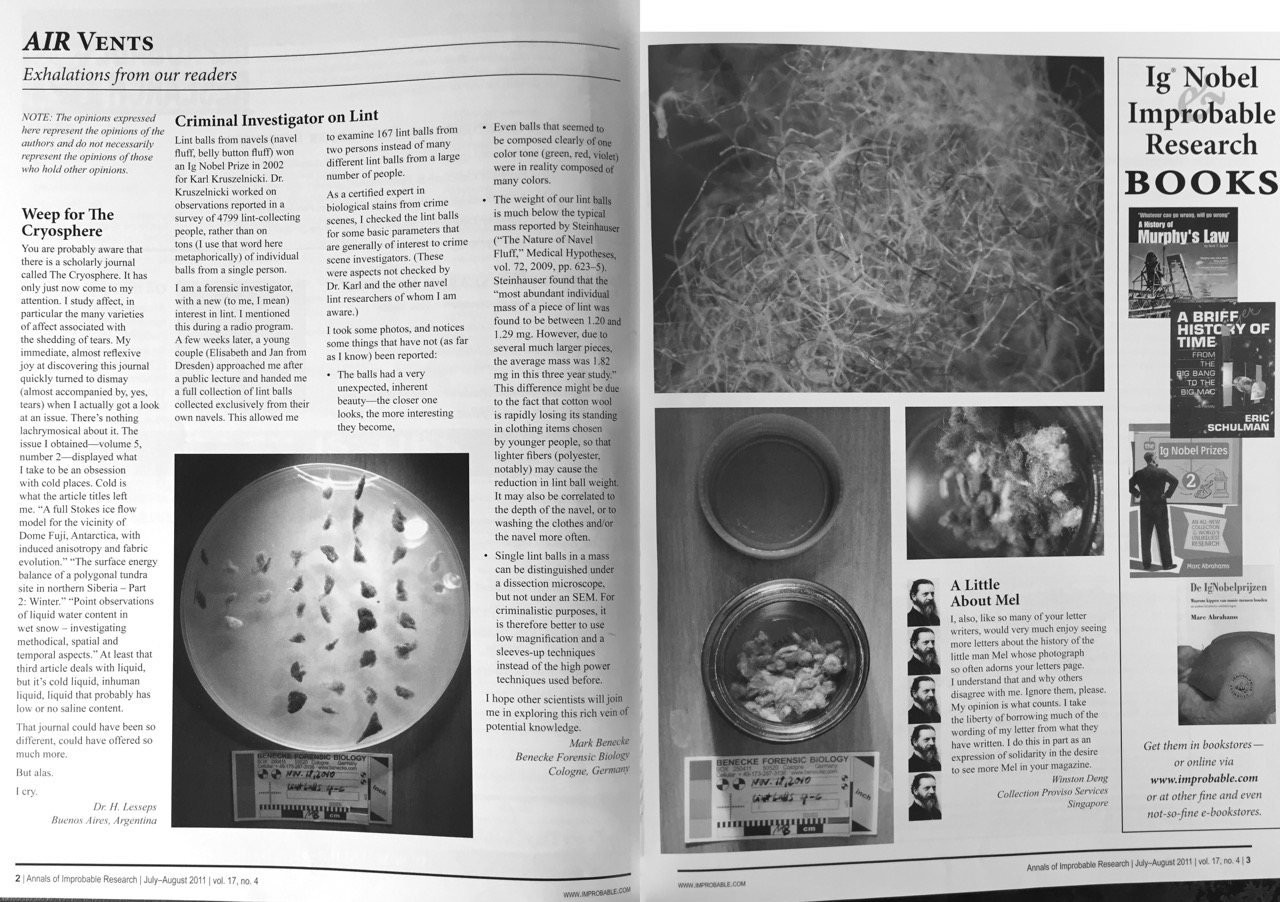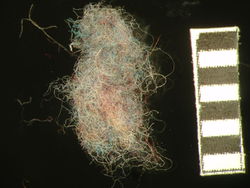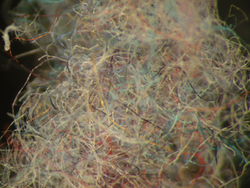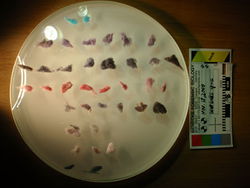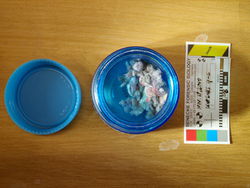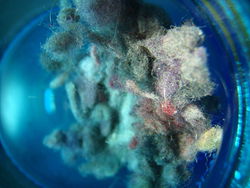2011-07 AIR: Criminal Investigator on Lint
Quelle: Annals of Improbable Research, 15 (July/August 2011): 2-3
Criminal Investigator on Lint
[More articles from MB] [Articles about MB]
BY MARK BENECKE
Lint balls from navels (navel fluff, belly button fluff) won an Ig Nobel Prize in 2002 for Karl Kruszelnicki. Dr. Kruszelnicki worked on observations reported in a survey of 4799 lint-collecting people, rather than on tons (I use that word here metaphorically) of individual balls from a single person.
I am a forensic investigator, with a new (to me, I mean) interest in lint. I mentioned this during a radio program. A few weeks later, a young couple (Elisabeth and Jan from Dresden) approached me after a public lecture and handed me a full collection of lint balls collected exclusively from their own navels. This allowed me to examine 167 lint balls from two persons instead of many different lint balls from a large number of people.
As a certified expert in biological stains from crime scenes, I checked the lint balls for some basic parameters that are genereally of interest to crime scene investigators. (These were aspects not checked by Dr. Karl and the other navel lint researchers of whom I am aware.)
I took some photos, and notices some things that have not (as far as I know) been reported:
- The balls had a very unexpected, inherent beauty - the closer one looks, the more interesting they become.
- Even balls that seemed to be composed clearly of one color tone (green, red, violet) were in reality composed of many colors.
- The weight of our lint balls is much below the typical mass reported by Steinhauser ("The Nature of Navel Fluss", Medical Hypotheses, vol. 72, 2009, pp. 623-5). Steinhauser found that the "most abundant individual mass of a piece of lint was found to be between 1.20 and 1.29 mg. However, due to several much larger pieces, the average mass was 1.82 mg in this three year study." This difference might be due to the fact that cotton wool is rapidly losing its standing in clothing items chosen by younger people, so that lighter fibers (polyester, notably) may cause the reduction in lint ball weight. It may also be correlated to the depth of the navel, or to washing the clothes and/or the navel more often.
- Single lint balls in a mass can be distinguished under a dissection microscope, but not under an SEM. For criminalistic purposes, it is therefore better to use low magnification and a sleeves-up techniques instead of the high power techniques used before.
I hope other scientists will join me in exploring this rich vein of potential knowledge.
Mark Benecke
Benecke Forensic Biology
Cologne, Germany
P.S.: Mean weight of the lint balls in our case was 0.66 milligrams -- half the weight that was formerly measured. For possible reasons, see above.
Further Reading
- Der Wert der Fussel GERMAN TEXT
- Der vertonte Fadenwurm GERMAN TEXT
- Vom Schneck zum Schreck GERMAN TEXT
- Alle Radio-Beiträge von MB GERMAN LANGUAGE
- Mehr Wissenschafts-Humor GERMAN TEXT
- Das rätselhafte Gesetz von Kraft und Masse GERMAN TEXT
- Das sind nicht Sachen sondern Menschen GERMAN TEXT
- Mein Preis-Favorit: Der Ig-Nobelpreis GERMAN TEXT
- Sticht! Das Mückenquartett GERMAN TEXT
- Cyberwuermer GERMAN TEXT

